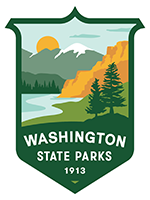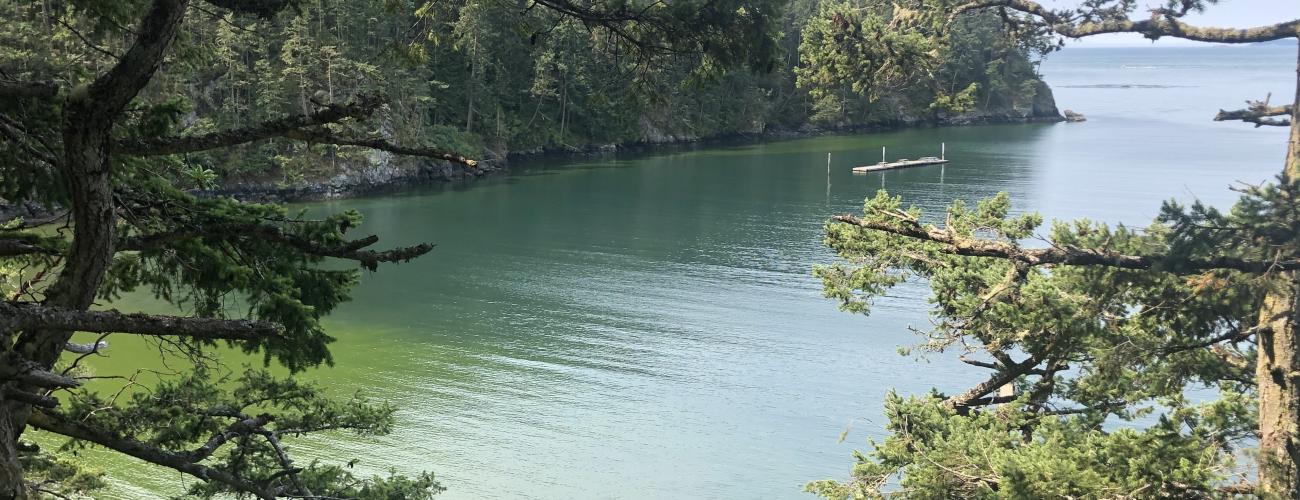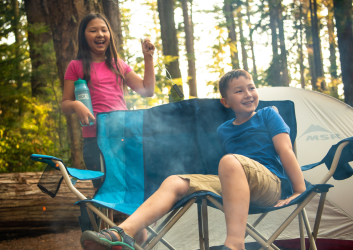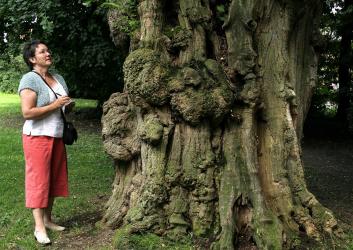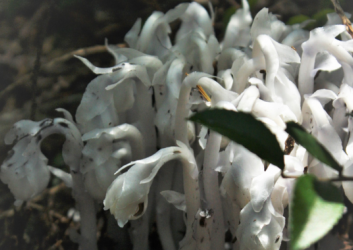Blue-green gross-out: What is toxic algae, why it blooms and what we can do about it
Every summer several Washington lakes and river sections, including a few at state parks, close due to toxic algae blooms. Not only is this gross and annoying – especially when your vacation is already planned – but blooms can pose serious health risks to people and pets.
What are toxic algae blooms
Toxic algae blooms are microscopic organisms that grow quickly, or “bloom” in a lake or reservoir.
Most are not algae. They’re cyanobacteria. The word “cyan” means blue-green, and we all know what bacteria are. Bacteria already live in our waters, but their numbers are low, and they usually don’t cause problems unless they bloom.
A bloom may look like spilled blue-green paint or a blobby mess on the water. In high concentrations, cyanobacteria can produce toxins that hurt people, pets, wildlife and the environment. Like most plants, cyanobacteria need food, sunlight and warmth to grow.
When the sun shines on a lake all day, the water warms up. Warm water plus nutrients like phosphorus and nitrogen gives the bacteria a boost to reproduce. In the right conditions (usually mid to late summer), they can reproduce rapidly, which forms a “bloom.”
You love a calm lake, especially if you’ve got kids or dogs. But stagnant or slow-moving water allows cyanobacteria to collect. Blooms can also happen in rivers, particularly where water is mellow – like in swim areas.
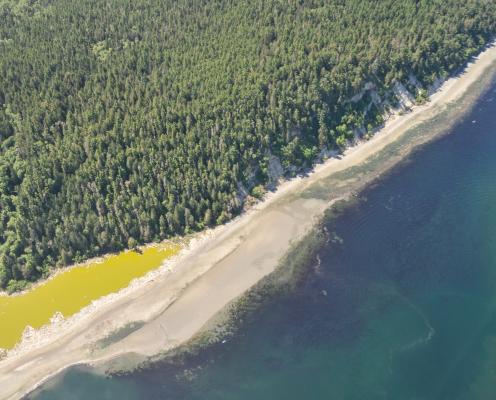
The human factor
Some lakes are just prone to blooms, but what we do also matters.
-
At home: The fertilizer we put on lawns and farms contains nitrogen and phosphorus – a favorite food of bacteria. When it rains, fertilizer runs into nearby waterways.
-
Urban ick: Storm drains and runoff from cities contain pet waste, food trash, industrial discharge and other materials that go into our lakes and streams. Leaky septic systems are another culprit.
-
Climate change: Rising temperatures cause more toxic algae blooms. In addition to warmer air and water, changes in rainfall from droughts cause low-flow conditions or heavier storms increase nutrient runoff.
-
Outdoor etiquette: When we forget to dispose of trash, dishwater and dog doo in nature, we outdoorspeople are like a cheering squad for cyanobacteria.

What’s the good news?
We may be part of the problem, but we can also be part of the solution. Here are our tips:
In nature: Follow Leave No Trace principles. When washing dishes in our parks, use eco-soap in a plastic tub and dump dishwater far from waterways. In the backcountry, set camp 200+ feet from water, poop even farther away (and in a six-inch-deep hole you’ve dug out) and bury it. Pick up after your dog and properly dispose of their waste too.
At home: Limit fertilizer and avoid spreading fertilizer before it rains. Make sure your septic system gets regular maintenance. And scoop your dog’s poop to keep feces out of storm drains and waterways.
Don’t come in. The water’s not fine!
Sometimes State Parks closes a lake or section of river. We’re not doing it to be mean. We want you, your kiddos and your critters to be safe and not end up sick. If you see a warning sign, don’t go in the water. Even if there’s no sign, but the water looks suspicious, remember “When in doubt, stay out!”
Contact with contaminated water can give us rashes or hives. Inhaling droplets can wreak havoc on our respiratory systems. And drinking even a little is like taking poison.
Backpacking filters and chlorine drops won’t neutralize cyanobacteria, and boiling contaminated water just makes toxic tea.
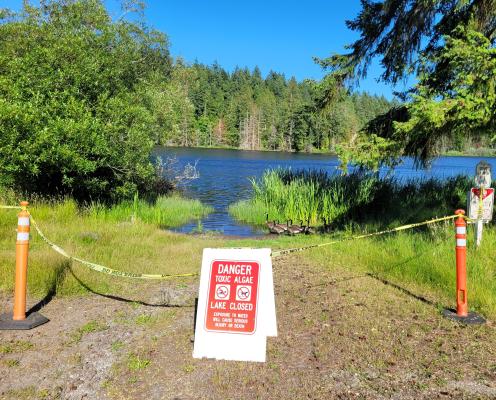
Be especially careful to protect your pets
Pets are at higher risk than we are. They drink from lakes and rivers and lick themselves afterward. So, keep them far from the shore and on leash during blooms. Like our lake closures, our leash laws are there to keep the whole family safe – from illness and heartbreak.

Originally published September 08, 2025
